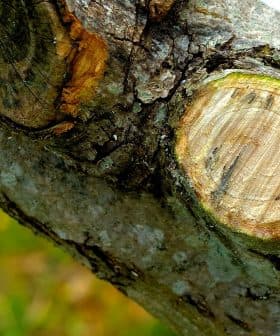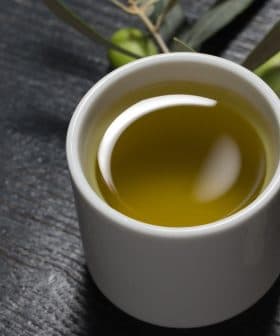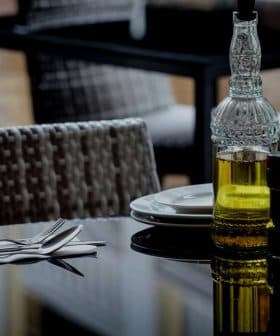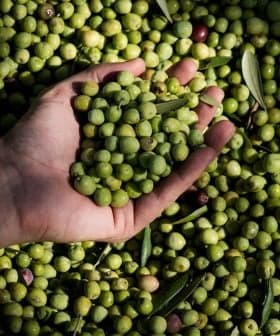Lebanon's Climate Is Becoming Less Conducive to Olive Growing
Scientists believe the loss of productivity and quality may occur in the Levant and the Mediterranean basin due to rising temperatures and less precipitation.
 Rummana Camp near Dana village, Jordan
Rummana Camp near Dana village, Jordan Research indicates that rising temperatures due to climate change will impact the health and fruit-bearing ability of olive trees in the Mediterranean region, particularly in areas like Tyre, Lebanon. The study suggests that the changing climate conditions may lead to a decline in olive tree cultivation and olive yields, prompting growers like Karim Arsanios to adopt new strategies to mitigate the effects of climate change on their farms.
Olive growers and oil producers across the Mediterranean basin have observed the challenges caused by climate change in the region.
New research now suggests that rising surface temperatures will significantly impact the region’s olive trees’ health and ability to bear fruit.
We can see that temperatures in those areas are going to exceed the threshold, and that might not be good news for the local olive tree population.
A team of researchers focused on the climate history of Tyre, Lebanon, where olive trees have thrived for thousands of years.
They confirmed that the climate changes over time, slowly drifting away from ideal rainfall and temperature conditions for olive tree cultivation.
See Also:Ahead of a Bumper Harvest, Lebanese Producers Demonstrate ResilienceThe research published in Nature Plants is based on analyzing 5,400 years of pollen data from a 390-centimeter sediment sample collected in Tyre, 83 kilometers south of Beirut.
Once dated and treated, the pollen grains found in sediments offer decisive clues about temperature and other weather conditions that accompanied the domestication of the olive tree in human settlements.
“We used the pollen data, not only from olive trees but also several different species, to reconstruct climate data over time,” Rachid Cheddadi, co-author of the study and a biodiversity researcher at the University of Montpellier in France, told Olive Oil Times.
By examining the sample layer by layer, researchers were able to measure the distribution and volume of pollen through time and associate it with corresponding climate conditions.
To complete the picture, the researchers used the current climate data, referencing 325 olive-growing areas in the Mediterranean.
By associating the datasets and their findings, the researchers found that optimal growing conditions for olive groves include an annual average temperature between 16.9 ºC and 18.3 ºC.
“This threshold appears as the ideal condition for the optimal flowering and vitality of the olive tree, the best suitable temperature for olive trees to grow,” Cheddadi said.
Further analysis of those data suggested that current and historic olive yields are impacted similarly by the same climatic and temperature conditions.
“The more the conditions change, moving away from that threshold, the more the species is impacted,” Cheddadi said.
By studying the past and current rainfall patterns, the researchers speculated that the lower-than-ideal rainfall levels in Tyre may have resulted in the local olive trees altering the chemistry of the drupes, changing the flavor profile and nutritional content of the olives.
This result is due to the chemical reaction of the trees to the lower amount of water, which can decrease the number of fruit borne by the trees.
The researcher noted that if the olive tree undergoes freezing temperatures for an extended period, its tissues might be damaged.
“In the same way, if the olive tree is subjected to high temperatures, those might impact photosynthesis, with consequences on the tree’s health and productive capacities,” Cheddadi said.
Climate change models for Lebanon and the Levant show the distinct possibility that many historic olive-growing regions may no longer be well-suited for the trees in the coming decades.
“From those models, we can see that temperatures in those areas are going to exceed the threshold, and that might not be good news for the local olive tree population,” Cheddadi said.
The challenges of climate change are well-known to local growers. Karim Arsanios, the owner of Solar Olives in northern Lebanon, told Olive Oil Times that his farm is continuously testing and adopting new mitigating and adaptation strategies.
“Climate events are becoming more frequent and violent, as we have witnessed recently in Lebanon,” he said. “During January, we witnessed temperatures climbing as high as 25 ºC for about two weeks.”
“At Solar, we adopt a biodynamic approach to agriculture,” Arsanios added. “We try to intervene as little as possible, but given the current situation and considering projections for the next 10 years, we realize that we will be faced with more extreme weather events.”

Solar Olives
The farm is studying ways to retain water more efficiently during the rainy season. “And we are evaluating when an irrigation installation would be appropriate,” Arsanios added. “We are also trying to create an ecosystem that goes beyond sustainability and becomes regenerative.”
Predictions for how the climate will change in the Levant are also predicted to spread to the rest of the Mediterranean basin, which climatologists consider a climate change hotspot. The surface temperatures of the whole region are rising faster than in most other continents and regions.
“For Lebanon, this is the scenario, also because it is located on the southern edge of the range for many European trees, such as oaks and cedars,” Cheddadi said. “This problem that we face will first affect, of course, the countries that are at lower latitudes.”
For local growers, adapting to new conditions is a must. “I can say that olive trees have been in this area for almost 7,000 years, and just like figs, they are mentioned both in the Qu’ran and the Bible,” Arsanios said.
“The olive tree played an important role in the economy and civilization over time,” he added. “It was used for trading olive wood with cedar wood, as fuel for lamps and to bake bread, and it was considered a symbol of beauty, courage and fertility. In Arabic poetry and literature, there are a lot of references to the olive tree.”
“We cannot predict the future,” Cheddadi added. “So many different areas and regions in the Mediterranean might have different outcomes. On top of that, in many countries, there are scientists who can handle the situation and make predictions. Policies and adaptation instruments might be studied that can greatly help in addressing the changing climate.”
“At this stage, what we scientists are doing is to give a warning that we must be careful and address the problem,” he concluded.
Share this article









